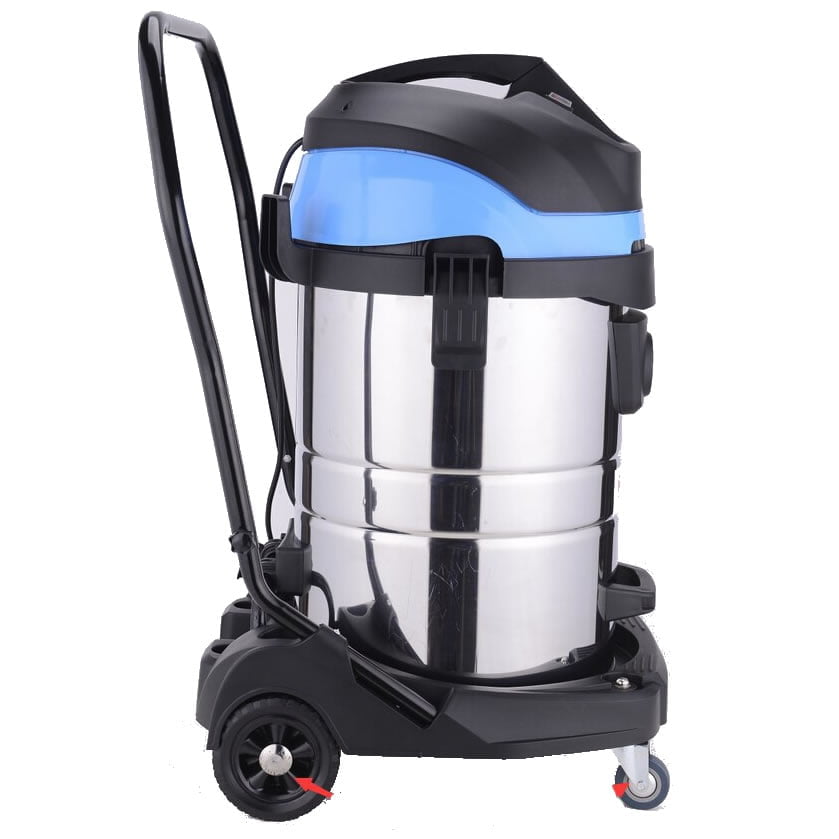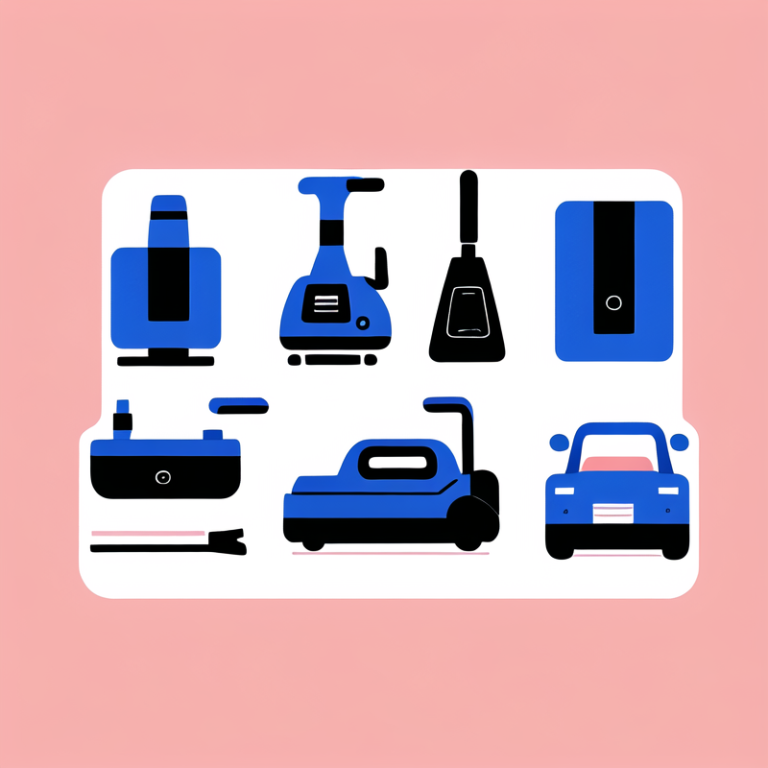Types of Vacuum Cleaners
How to choose a vacuum cleaner? Choosing the right type of vacuum cleaner is crucial for your cleaning needs. There are several designs available, each with its unique strengths and weaknesses.

Upright Vacuums
Upright vacuums are popular for their powerful suction and ease of use. They work well on carpets and come with several on-board attachments. Many prefer them for larger areas as they don’t require bending over, making them kinder on your back.
Canister Vacuums
Canister vacuums offer versatility with a separate unit for the motor and receptacle. They have a flexible hose that makes them excellent for stairs, upholstery, and under furniture. They’re ideal if you have a mix of bare floors and carpets.
Stick Vacuums
Stick vacuums are lightweight and convenient for quick clean-ups. They often come cordless for maximum portability. Consider a stick vacuum if you have a smaller space or need something for everyday messes.
Handheld Vacuums
Compact and easy to store, handheld vacuums are perfect for spot-cleaning. They’re great for getting crumbs off the couch or dirt out of your car. Their small size makes them a handy complement to a larger vacuum.

Robotic Vacuums
Robotic vacuums automate the cleaning process and can be a significant time-saver. They can navigate around your home independently and handle daily dust and debris. They are an excellent option for maintaining clean floors in between deep cleaning sessions.
Key Features to Consider
When delving into how to choose a vacuum cleaner, there are essential features you must consider. These features directly impact effectiveness, ease of use, and overall satisfaction.
Suction Power
Suction power is the backbone of your vacuum’s performance. Powerful suction ensures that more dirt and debris are lifted from surfaces. It’s particularly vital for homes with pets or high foot traffic.
Filtration System
A good filtration system is key for keeping the air clean and reducing allergens. It traps fine particles that could otherwise escape back into the room. Consider vacuums with HEPA filters for the best air quality.
Bagged vs. Bagless
Choosing between a bagged or bagless vacuum affects maintenance and operation. Bagged vacuums can provide cleaner disposal, while bagless models may be less costly over time since you do not need to buy replacement bags.
Corded vs. Cordless
Your choice between a corded or cordless vacuum depends on your need for mobility versus continuous power. Cordless vacuums offer freedom of movement, but remember to check battery life and charging time.
Considering the Size and Layout of Your Home
When learning how to choose a vacuum cleaner, your home’s size and layout play a pivotal role. A larger area may call for a vacuum with a wider cleaning path and more power. For a smaller space, a less bulky and more maneuverable model could be ideal.
Floor Types
Assess the types of floors in your home. Hardwood and tile require vacuums with soft bristles. Carpets often need vacuums with stronger suction and brush action. Some vacuums have settings to switch between floor types.
Stairs and Upholstery
Your home may have stairs or plenty of upholstery. Look for vacuums that come with specialized attachments. Canister vacuums are typically easier to move up and down stairs. They can handle corners and furniture well. For upholstery, consider vacuums that include targeted tools.
Storage Space
Think about where you will store your vacuum. Compact models are better if you lack storage space. Cordless stick vacuums are a good choice for tight spots. They can often hang on a wall or tuck away neatly.

Vacuum Cleaner Attachments and Accessories
When exploring how to choose a vacuum cleaner, consider the attachments and accessories. They enhance cleaning capabilities and offer specialized solutions.
Crevice Tool
The crevice tool is narrow and angled, perfect for reaching tight spaces. Use it between cushions or along baseboards for efficient cleaning.
Dusting Brush
A dusting brush has soft bristles, ideal for gentle cleaning. It’s effective on surfaces like lampshades and blinds, preventing dust buildup.
Upholstery Tool
The upholstery tool is wide with a fabric strip to pick up lint. It’s designed for sofas, chairs, and more, keeping your furniture clean.
Understanding Vacuum Cleaner Specifications
When figuring out how to choose a vacuum cleaner, specifications are crucial. They can tell you a lot about performance and suitability for your needs.
Airflow and Sealed Suction
Airflow measures how much air moves through the vacuum. This impacts the vacuum’s ability to pick up debris. Good airflow means better cleaning power. Sealed suction, also known as water lift, tests how much it can lift. This specification is good for heavy-duty tasks.
Noise Level
Vacuum noise can be a deal-breaker for some. Check the decibels (dB) to know how loud it will be. Quieter vacuums are less disruptive in home environments.
Weight and Maneuverability
The weight of a vacuum affects how easily you can move it. Lighter models are easier to carry up stairs or around your home. Maneuverability matters for navigating furniture and corners smoothly.
Brand and Price Comparison
When selecting a vacuum cleaner, the brand and price are critical factors to weigh in. Brands vary in reputation, durability, and customer service. Price can indicate quality but doesn’t always guarantee it. By comparing these, you can find the best value for your money.
Evaluating Brands
Different brands offer unique features and levels of reliability. Some brands are known for their cutting-edge technology, while others for their robust build quality. Look for customer reviews and ratings to assess the brand’s track record. Considering after-sales service and the availability of parts can save you future headaches.
- Check for well-established brands with a history of positive feedback.
- Examine user testimonials for insights into long-term performance.
- Investigate how easily you can access customer service and spare parts.
Setting a Budget
Your budget will play a significant role in how to choose a vacuum cleaner. It’s important to set a realistic budget that balances cost with the features you need.
- Decide on the maximum amount you are willing to spend.
- Consider the long-term costs, such as replacement bags or filters.
- Don’t forget to account for potential sale or discount opportunities.
Remember, an investment in a good quality vacuum cleaner will often pay off in the long run, as it could lead to fewer replacements and repairs. However, make sure not to overspend on features that you may not require.
Maintenance and Warranty
When evaluating how to choose a vacuum cleaner, don’t overlook maintenance and warranty. These factors will impact your vacuum’s longevity and performance.
Cleaning and Replacing Filters
Regular maintenance of filters is vital for your vacuum to function well. A clogged filter reduces suction power and efficiency. For bagless models, wash or replace filters as recommended by the manufacturer. Bagged models usually require less frequent changes but follow the guidelines for your specific model. Remember, HEPA filters catch fine particles better and maintain air quality, but they need regular checks too.
Clean or replace filters every few months to prevent loss of suction and protect the motor.
Understanding Warranty Coverage
Warranties protect your investment in a vacuum cleaner. They vary in length and what they cover. Some offer protection for the motor, while others cover all parts. Read the warranty terms carefully before purchase. Know what actions might void your warranty, like improper use or unauthorized repairs.
Choose a vacuum with a warranty that provides comprehensive coverage for several years. It will be helpful if repairs or replacements are necessary. Keep your purchase receipt and warranty information in a safe place for easy access.


